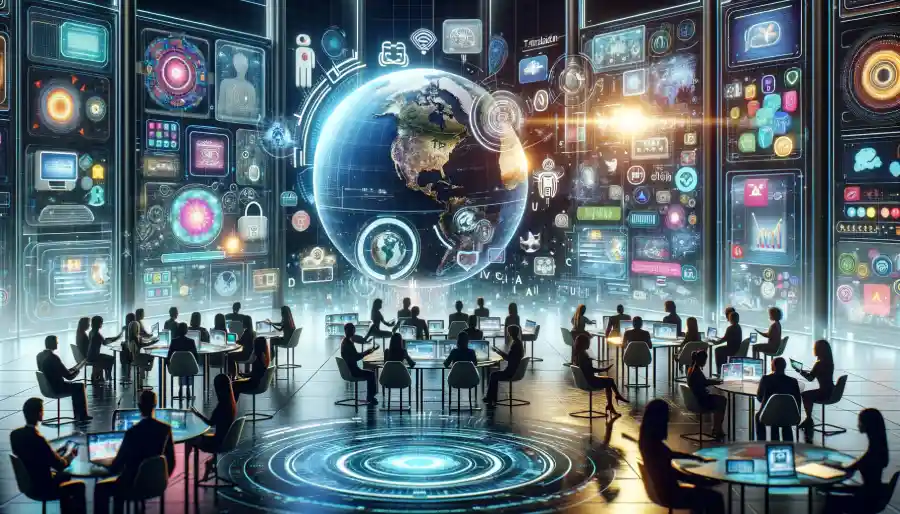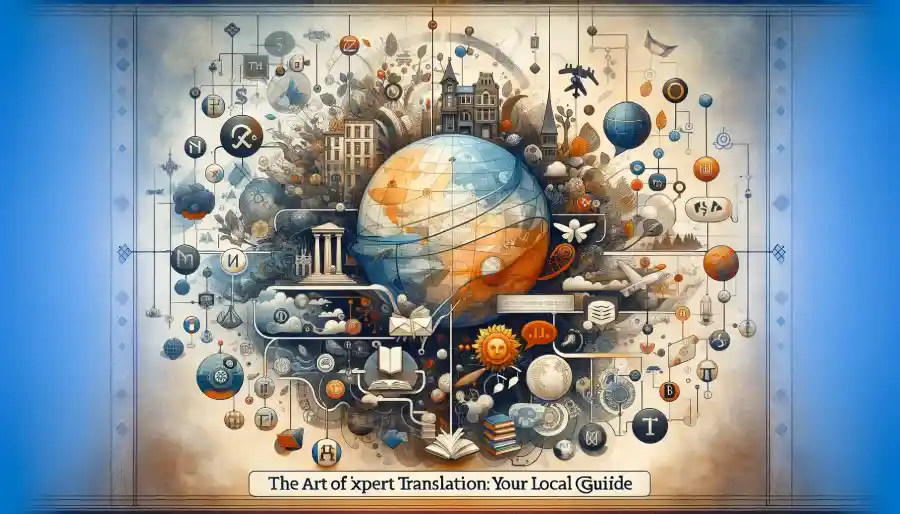Mastering Käntäjää: The Art of Expert Translation
In an era where global communication is paramount, the art of translation stands as a vital bridge connecting diverse cultures and languages. This intricate process, known in Finnish as Käntäjää, transcends mere linguistic conversion, embodying a complex interplay of language proficiency, cultural understanding, and contextual awareness. The role of a translator, or Käntäjää, is not just about transposing words from one tongue to another; it’s about conveying meanings, emotions, and cultural nuances that resonate across linguistic boundaries.
As we delve deeper into the realm of translation, it becomes evident that this field is not static but dynamically evolving with technological advancements and the ever-changing tapestry of global interaction. From traditional manual translation to cutting-edge automated language processing tools, the spectrum of translation services has expanded dramatically, offering solutions for a myriad of communication needs.
For those intrigued by the multifaceted world of translation and its impact on global discourse, a wealth of information awaits. An insightful resource that further explores the nuances and intricacies of Käöntöjä can be found at Truth Frequency News. This platform offers a deep dive into the translator’s craft, shedding light on the skills, challenges, and innovations shaping the future of translation.
Whether you are a language enthusiast, a professional translator, or simply curious about the mechanics of cross-cultural communication, understanding the essence of Käntäjää is key to appreciating the invisible yet indispensable role translators play in our interconnected world. Join us as we explore the fascinating journey of translation, where every word and phrase unlocks a gateway to new worlds and perspectives.
The Role of a Translator käntäjää
The role of a translator, often encapsulated in the Finnish term käntäjää, is multifaceted and extends far beyond the basic task of converting text from one language to another. It involves a deep understanding of the source and target languages, as well as the cultures and contexts they represent. In this section, we will explore the various dimensions of a translator’s role, highlighting their importance in today’s globalized world.
Linguistic Expertise and Accuracy
- Mastery of Languages: A translator must have an excellent command of both the source and target languages, understanding not just vocabulary and grammar, but also idiomatic expressions and linguistic nuances.
- Accuracy in Translation: Ensuring the translated content is accurate and faithful to the original text is paramount. This involves careful consideration of context, tone, and intent.
Cultural Mediator
- Bridging Cultural Gaps: Translators often act as cultural mediators. They must understand the cultural backgrounds of both languages to accurately convey messages without misinterpretation.
- Handling Cultural Sensitivities: Awareness of cultural sensitivities and taboos is crucial. A skilled translator navigates these carefully, ensuring the translation is appropriate for the target audience.
Adapting to Context
- Contextual Relevance: Translators must adapt the content to fit the context and purpose of the translation, whether it’s for legal documents, literary works, technical manuals, or marketing materials.
- Localizing Content: Localization involves adapting the content to suit the cultural, social, and linguistic context of the target audience, making it more relatable and effective.
Ethical Responsibilities
- Confidentiality and Integrity: Translators often handle sensitive information. Maintaining confidentiality and ethical integrity is a critical aspect of their role.
- Impartiality: In certain settings, like legal or medical translation, impartiality is essential. Translators must convey information objectively, without adding personal opinions or biases.
Continuous Learning and Adaptation
- Keeping Up with Language Evolution: Languages are constantly evolving, and translators need to stay updated with new terms, phrases, and usage.
- Adapting to New Technologies: With the advent of translation technologies and AI, translators must adapt and learn to use these tools effectively, enhancing their skills and efficiency.
Lastly, the role of a translator is complex and demands a high level of skill, cultural intelligence, and ethical responsibility. As global communication continues to grow, the demand for skilled translators who can navigate the nuances of language and culture becomes increasingly important, making “Käöntöjä” a profession of critical relevance in our interconnected world.

Technological Advancements in Translation käntäjää
The Digital Revolution in Translation käntäjää
The landscape of translation has been profoundly transformed by the advent of Artificial Intelligence (AI) and machine learning. These technologies have not only accelerated the process but have also enhanced the accuracy of translations. They learn and adapt over time, becoming more proficient in handling linguistic nuances and idioms. Automated translation tools, such as Google Translate, have democratized access to basic translation across a multitude of languages, making it possible for anyone with internet access to understand and communicate in foreign languages. This digital revolution has significantly increased the efficiency of translation processes, reducing the time and effort required for even the most complex projects.
Tools of the Trade
In the realm of professional translation, software like SDL Trados and MemoQ has become indispensable. These tools offer advanced features including translation memory and terminology management, which are crucial for maintaining consistency in large projects. Online translation platforms like DeepL and Babylon provide high-quality automated translations with options for human review, bridging the gap between automated and professional translation. Additionally, mobile applications such as Duolingo and Babbel have emerged as handy tools for language learning and translation, facilitating on-the-go language assistance.
Multilingual Translation Challenges
Navigating Multiple Languages
Translating across multiple languages presents unique challenges, especially when dealing with languages that have vastly different structures, idioms, and cultural contexts. A key aspect of multilingual translation is not just the linguistic conversion but also the conveyance of cultural nuances and references. This becomes particularly complex with dialects and regional variations, where a single language can have multiple forms, each with its own set of nuances and meanings.
Case Studies
Consider the translation of legal documents, where precision and an in-depth understanding of legal terminologies in different languages are crucial. Misinterpretation can lead to legal discrepancies. Similarly, literary translation poses its own set of challenges, where the translator must capture the author’s voice and style in a different language, often requiring creative solutions to convey the same essence and emotion.
Professional vs. Free Translation Services
When to Choose Professional Services
Professional translation services are indispensable in scenarios where accuracy and expertise are non-negotiable, such as in legal and official documents. The same applies to technical and scientific texts, where specialized knowledge and precise terminology are essential. In these contexts, professional translators ensure that the translated content is not only linguistically accurate but also adheres to the relevant industry standards.
Utilizing Free Translation Tools
Free translation tools are suitable for basic communication needs or for gaining a general understanding of content in a foreign language. However, it’s important to recognize their limitations, especially in terms of accuracy and contextual understanding. These tools are best used for informal purposes and should be approached with caution when dealing with complex or sensitive material.
Learning and Mastering Translation Skills
Educational Pathways
For those aspiring to become professional translators, there are various educational pathways available, including formal degree programs, certificates, and specialized training courses in translation and linguistics. The rise of online education has also made it easier to access courses and workshops, allowing aspiring translators to develop their skills remotely.
Continuous Learning and Adaptation
The field of translation requires continuous learning and adaptation. Translators must stay abreast of language trends, technological advancements, and industry practices. Embracing new tools and technologies is also crucial for enhancing translation skills and efficiency.
Conclusion
As we reflect on the expansive realm of translation, the role of the käntäjää (translator) emerges as more crucial than ever in our increasingly interconnected world. The journey through the nuances of language and the intricacies of cultural contexts underscores the indispensable value of the käntäjää. In an age where technology has reshaped nearly every aspect of our lives, the field of translation has seen remarkable advancements. Yet, despite the strides made in automated translation tools and AI-driven language services, the human touch provided by a skilled käntäjää remains irreplaceable.
The käntäjää stands not just as a linguistic converter but as a cultural ambassador, bridging gaps that machines alone cannot. They bring empathy, cultural insight, and a deep understanding of context to their work, ensuring that communication is not only accurate but also resonant with its intended audience. As we have seen, the challenges of multilingual translation, the nuances of professional versus free translation services, and the continuous evolution of translation skills all highlight the dynamic nature of the käntäjää’s role.
In conclusion, the future of translation is a tapestry woven from the threads of technological innovation and human expertise. The käntäjää, with their unique blend of skills and insights, will continue to play a pivotal role in connecting people, cultures, and ideas across linguistic boundaries. As the world grows smaller and our interactions more global, the need for skilled translators – the true käntäjääs of our time – becomes not just important but essential in fostering understanding and collaboration in our diverse world.







